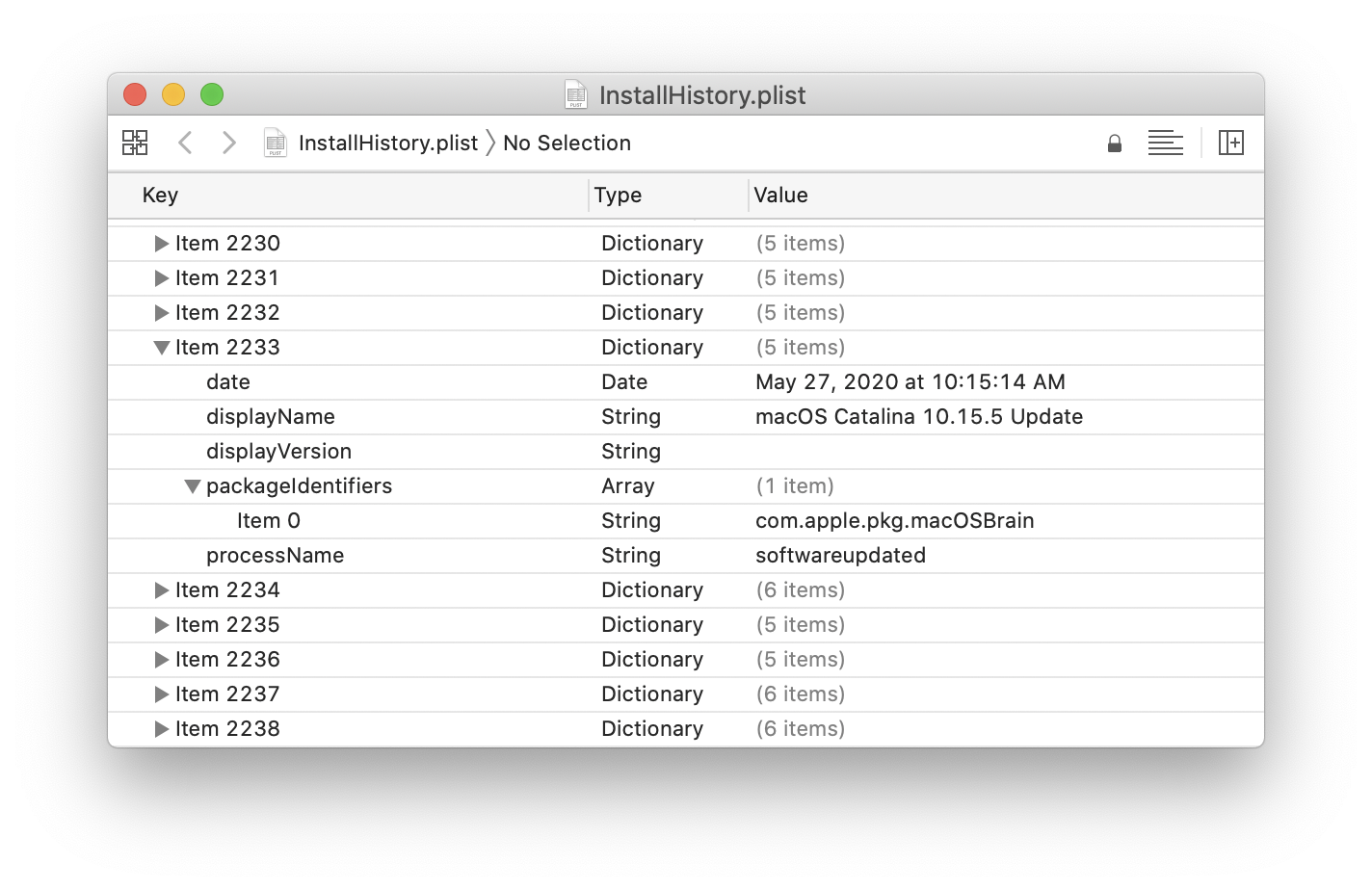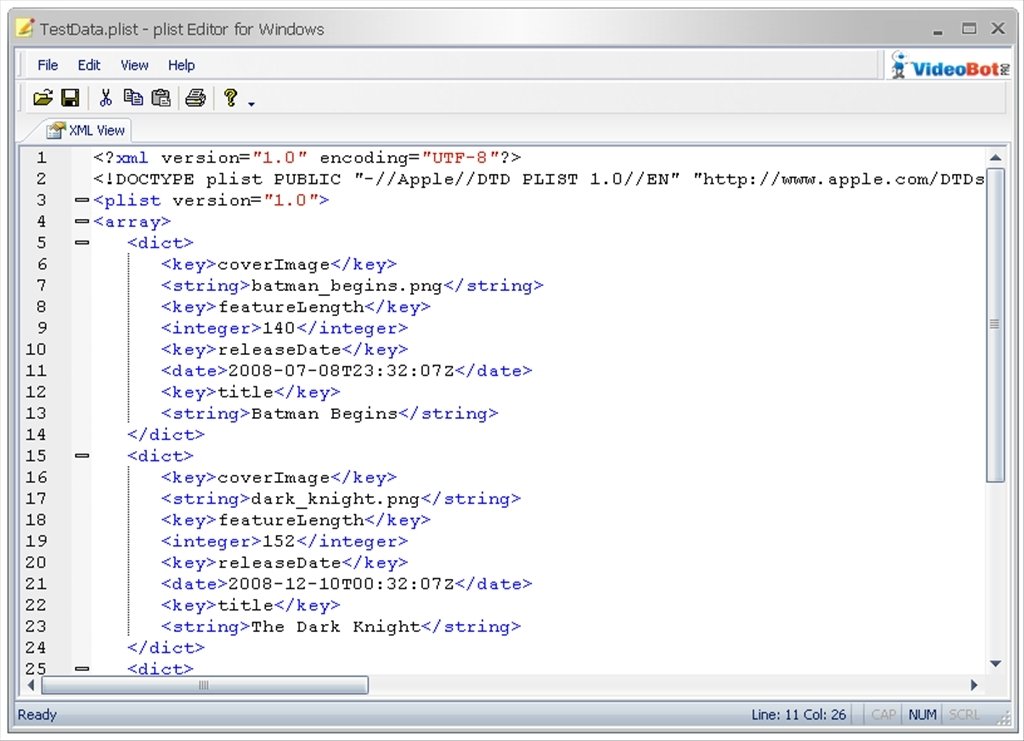- Key feature of plist Editor Pro. Reading and edit both of XML format and binary format of plist files. View and edit plist file in XML text mode. View plist file in property list mode, like the default plist Editor in Mac OS. In list mode, you can double click a DATA property, the program will decode the data and open with built-in plist Editor.
- Trusted Windows (PC) download plist Editor Pro 3.0.0. Virus-free and 100% clean download. Get plist Editor Pro alternative downloads.
- IPodRobot plist Editor for Windows is a software that can edit both of XML format and Binary format Mac OS property list file (.plist) under Windows system.
A PLIST file is a settings file used on Apple operating systems, also known as 'Property List' file. PLIST file is widely used by iOS apps and macOS applications. macOS provides several ways to open and view PLIST file, for example xcode and 'Property List Editor'. But there is no such program to view plist file on windows. iBackup Viewer offers a free utility tool to view binary and xml PLIST files, also provides a simple HEX viewer to view binary data value of the plist file. Please follow these steps to open plist file on Windows.
Customize your About This Mac! Contribute to elsorino/Edit-About development by creating an account on GitHub. Xcode for plist/hex editor. Create or download.
Install and Launch iBackup Viewer
Download and install iBackup Viewer on your computer, launch iBackup Viewer.
Open Property List Viewer
When iBackup Viewer starts, choose 'Property List Viewer' from the main menu
Click the 'Open' button to open and view a PLIST file.
iBackup Viewer supports editing property list file starting from version 4.18.2 (4.1820 for Mac)Change type of item
Allow editing value of plist item
Easily undo or redo changes
To view binary data value looks like '<6400a322 f303ac23....a3c4d232>', double click on the value to open hex viewer.Edit value of 'Data' item
iBackup Viewer supports pasting base 64 string to edit value by pressing Control + V or Command + V when 'Data' item is selected.
This changes the plist in XML back to binary format. Once it’s in binary format it will not be editable with a standard text editor again, unless you convert it back into XML, or use Xcode’s built-in property list editor tool. The modified binary list files can then be placed back into various system level or app level directories as necessary. PlistEdit Pro 1.9.1 – Property list editor PlistEdit Pro is the most advanced property list editor written for Mac OS X. Property list files are used throughout Mac OS X, and with PlistEdit Pro, users can easily change these files and exert finer control over their systems.

This article describes how to configure Microsoft Edge on macOS using a property list (.plist) file. You'll learn how to create this file and then deploy it to Microsoft Intune.
For more information, see About Information Property List Files (Apple's website) and Custom payload settings.
Note
This article applies to Microsoft Edge version 77 or later.
Configure Microsoft Edge policies on macOS
The first step is to create your plist. You can create the plist file with any text editor or you can use Terminal to create the configuration profile. However, it's easier to create and edit a plist file using a tool that formats the XML code for you. Xcode is a free integrated development environment that you can get from one of the following locations:
For a list of supported policies and their preference key names, see Microsoft Edge browser policies reference. In the policy templates file, which can be downloaded from the Microsoft Edge Enterprise landing page, there's an example plist (itadminexample.plist) in the examples folder. The example file contains all supported data types that you can customize to define your policy settings.
The next step after you create the contents of your plist, is to name it using the Microsoft Edge preference domain, com.microsoft.Edge. The name is case sensitive and should not include the channel you are targeting because it applies to all Microsoft Edge channels. The plist file name must be com.microsoft.Edge.plist.

Important
Starting with build 78.0.249.2, all Microsoft Edge channels on macOS read from the com.microsoft.Edge preference domain. All prior releases read from a channel specific domain, such as com.microsoft.Edge.Dev for Dev channel.
The last step is to deploy your plist to your users' Mac devices using your preferred MDM provider, such as Microsoft Intune. For instructions see Deploy your plist.
Create a configuration profile using Terminal
In Terminal, use the following command to create a plist for Microsoft Edge on your desktop with your preferred settings:
Convert the plist from binary to plain text format:
After converting the file verify that your policy data is correct and contains the settings you want for your configuration profile.
Note
Only key value pairs should be in the contents of the plist or xml file. Prior to uploading your file into Intune remove all the <plist> and <dict> values, and xml headers from your file. The file should only contain key value pairs.
Deploy your plist
For Microsoft Intune create a new device configuration profile targeting the macOS platform and select the Preference file profile type. Target com.microsoft.Edge as the preference domain name and upload your plist. For more information see Add a property list file to macOS devices using Microsoft Intune.
For Jamf upload the .plist file as a Custom Settings payload.
Frequently Asked Questions
Can Microsoft Edge be configured to use master preferences?
Yes, you can configure Microsoft Edge to use a master preferences file.
Download Plist Editor Mac Free
A master preferences file lets you configure default settings for a browser user profile when Microsoft Edge is deployed. You can also use a master preferences file to apply settings on computers that aren't managed by a device management system. These settings are applied to the user’s profile the first time the user runs the browser. After the user runs the browser, changes to the master preferences file aren’t applied. A user can change settings from the master preferences in the browser. If you want to make a setting mandatory or change a setting after the first run of the browser, you must use a policy.

Property List Editor For Mac Versions
A master preferences file lets you to customize many different settings and preferences for the browser, including those shared with other Chromium based browsers and specific to Microsoft Edge. Policy related preferences can be configured using the master preferences file. In cases where a policy is set and there’s a corresponding master preference set, the policy setting takes precedence.
Important
All the available preferences might not be consistent with Microsoft Edge terminology and naming conventions. There’s no guarantee that these preferences will continue to work as expected in future releases. Preferences might be changed or ignored in later versions.
A master preferences file is a text file that’s formatted using JSON markup. This file needs to be added to the same directory as the msedge.exe executable. For system wide enterprise deployments on macOS this is typically: “~/Library/Application Support/Microsoft/Microsoft Edge Master Preferences' or '/Library/Application Support/Microsoft/Microsoft Edge Master Preferences”.
See also
PlistEdit Pro is the most advanced property list editor written for Mac OS X. Property list files are used throughout Mac OS X, and with PlistEdit Pro, users can easily change these files and exert finer control over their systems. You can use PlistEdit Pro in your development work, and its built-in preference file browser lets you explore and tweak your system’s settings to your heart’s content.
Some of PlistEdit Pro’s features include: Samsung galaxy s3 for mac os 10.7.
- Full drag and drop and copy/paste support
- Full keyboard navigation of the interface
- The ability to view and edit a property list both in an outline and as raw text
- Support for editing both plist and JSON files
- Extensive Applescript support, for automating processes involving property list files
- Property list definitions, which make editing common forms of property lists less cumbersome
- Full multi-level undo support
- Powerful find/replace capabilities
- A built-in window to browse through your preference files
- Customizable fonts
WHAT’S NEW
Version 1.9.1:
Property List Editor For Mac Os
- Improved consistency of saving the default split view position used when creating new documents
- Fixed a bug where the first edit made in the text view of a JSON file would not mark the document as edited
- Added “Copy As” submenu to contextual menu in plist outline editor
- Disabled automatic substitutions (e.g. smart quotes) when editing the raw text of a plist/JSON file
- The “View As” menu now supports byte counts both at 1,000 bytes/KB and 1,024 bytes/KB
- When saving changes to a JSON file with a custom extension, we no longer replace the extension with .json
- PlistEdit Pro is now notarized by Apple
- Fixed a bug where the “Cut” command would copy the wrong plist
- The space bar now opens the info popover when available
REQUIREMENTS
- Intel, 64-bit processor
- macOS 10.13 or later
What Is Plist Mac
ScreenShots :
Property List Editor For Mac
Download Plist Editor Mac Free
Download Link
Apple Property List Editor
Plist Editor Mac Os
If you are using Adblocker!! Please support this website by adding us to your whitelist. Ads are what helps us bring you premium content! . Thank you!